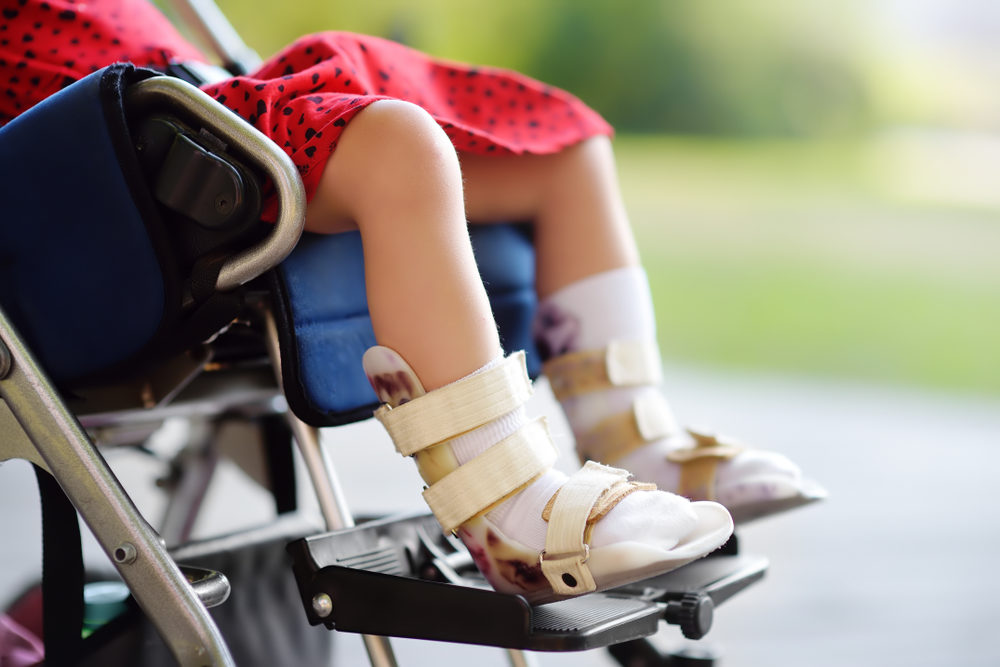
In the United States, every three babies born out of every thousand are affected with cerebral palsy (CP). Children with CP find it difficult, if not impossible, to walk, stand, or even sit up. They also can suffer from speech disorders, deafness, visual impairments and learning disabilities.
According to the Center for Disease Control, CP is the most common motor disability in childhood. It is a group of disabilities, both physical and mental, that occur when a child’s brain is damaged in the womb or shortly after birth. Causes can be due to oxygen deprivation, swelling, bleeding in the brain or skull fractures. Although most often CP occurs naturally, it sometimes occurs because of an error during the childbirth process.
Can surgery cure CP?
Although more than one million people in the world live with CP, there is no cure. Along with that, surgery is typically not the first treatment plan a patient or a patient’s parent will receive when it comes to CP. Most doctors agree surgery intervention should only be used if the benefit outweighs the risk.
For example, according to the National Institute for Neurological Disorders and Strokes, surgeons can lengthen muscles and tendons that are proportionately too short and improve mobility and lessen pain. However, there could be negative long-term consequences. Some consequences could be bleeding, infection, or even loss of functioning.
What other treatments are available for CP?
The first order of business is for the doctor or medical team to recognize the type of CP involved with the particular patient. They look at the different classifications, movement disorders (spastic, for those with stiff muscles, athetoid, writhing movements, or ataxic, poor balance and coordination). They also look for additional symptoms, including any weakness (paresis) or paralysis (plegia).
Once the doctors understand the individual’s particular CP, they work with therapists and the parents or caregivers to determine the best treatment plan. Most treatment plans are wide-ranging to cover the different aspects of a person’s life.
Physical Therapy: Generally, prescribing physical therapy is a decision a doctor makes soon after a child is diagnosed with cerebral palsy to create as much strength and mobility as possible early on. Doctors encourage keeping those with cerebral palsy as active as possible throughout their life to keep both the mind and body always as agile as possible.
Some exercises used by physical therapists on their CP patients include “passive range of motion exercises,’’ used to build up the ability of those who can not control their movements. These exercise types increase joint range of motion, improve circulation, stimulate essential muscles, and increase flexibility. For example, a hip rotation is a passive exercise in which the child lays flat while the therapist bends one knee and moves it in large circles, circling the hip joint. After a few rotations, the leg’s direction is switched.
For those CP patients who have enough strength, the therapist can lead them in more resistive or strength training exercises that can further improve muscle tone, balance and motor skills and prevent contractures, eventually making the child increasingly limber and strong.
Speech therapy: For many children with CP, speaking is challenging, and speech therapists can not only build up facial muscles but provide instruction on other ways to communicate, such as by using sign language or a special communication device.
Occupational therapy: This will help the child focus on everyday skills and activities, including dressing and moving through the school day.
Recreational therapy: This therapy is designed to strengthen intellectual skills and further improve physical skills. Examples include art programs, sports programs and cultural activities.
Orthotic devices: CP patients benefit from adding specific devices to their treatment plan. With the aid of braces, splints, casts, wheelchairs, walkers and powered scooters, an affected individual will have swift support. Movement becomes easier and more independence is found.
Medication: For someone afflicted with CP, there is an assortment of drugs to improve symptoms and address complications. Some help with seizures, spasticity, and unwanted or uncontrolled movements, while other medications help stiff muscles and increase comfort. There are also drugs to help with associated conditions, such as digestive problems, breathing difficulties, skin conditions and emotional issues.
Drugs are administered orally, injected in muscles, or infused into the fluid surrounding the spinal cord. However, medical professionals must manage the protocol due to the potential severity of side effects as the drugs travel through the bloodstream.
A brighter future
A new way to help those with CP appears to be on the horizon. Scientists are studying how stem cells can benefit a CP patient’s quality of life. Although they don’t expect a cure will be found soon, they hope stem cells can lessen symptoms and lead to new medication to repair damaged cells.
Cerebral Palsy can be a debilitating disease, requiring a lifetime of care. At Paulson & Nace, PLLC, we help families obtain the resources and compensation they need to give their children the best opportunities in life. If your child developed cerebral palsy after an error was made during the birthing process, please call 202-463-1999 or fill out our contact form.
@thumbnail.jpg)
Both an Emory School of Law graduate and MBA graduate of Goizueta Business School at Emory, Chris Nace focuses his practice on areas of medical malpractice, drug and product liability, motor vehicle accidents, wrongful death, employment discrimination and other negligence and personal injury matters.










Comments for this article are closed.